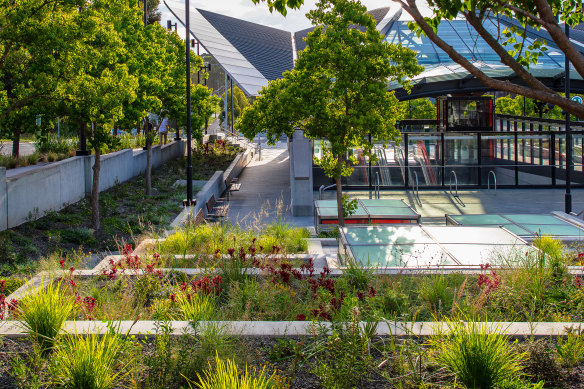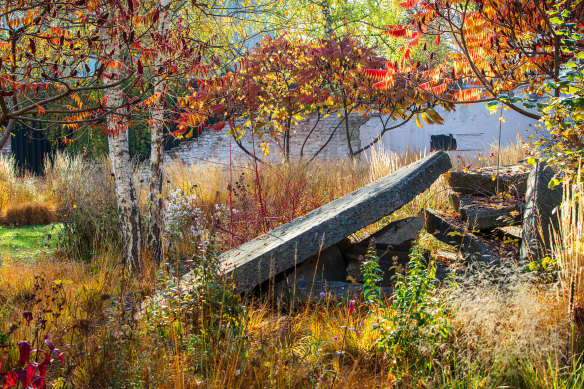[ad_1]
So, he stopped watering and turned to the roadside for inspiration. He interspersed informal lashings of succulents, leucadendron, lavender and other hardy fair with formally clipped shrubs and trees, such as Cupressus sempervirens. The wild effects Wilkinson has created are enchanting and this exciting garden teems with life across the seasons.
Much smaller but again dynamic and resilient is the suburban Melbourne garden designed by Amanda Oliver, where the emphasis is on leaf shapes and textures, and where plants sway in the wind, creep over the pool edge and cascade over pathways. All of the perennials, grasses, succulents and trees are dry-tolerant but a drip-irrigation system keeps them lush during prolonged hot, dry periods thereby lowering the air temperature through evapotranspiration.

The Sydney Metro Planting Trial is experimenting with new plantings in the public sphereCredit: Claire Takacs
Another naturalistic, random-feeling layout can be seen at a suburban railway station plaza in Sydney that aims to increase biodiversity and sustainability while also making our cities more attractive. In 2022 designers Jon Hazelwood (of Hassell) and John Rayner and Claire Farrell (University of Melbourne) planted 100 different herbaceous, predominantly native, species together with coppiced shrubs and began photographing the results every two weeks.
What this Sydney Metro Planting Trial has found is that weeding, watering and plant replacements have been significantly reduced compared with the plantings conventionally used in urban public spaces.
Loading
While not every garden has had its development documented so rigorously, all the gardens in the book rely on plant species adapted to their environment. Many use local stones and gravels that give a garden character and connect it to its location.
In a former shipyard-turned-private garden in Berlin, for example, salvaged pieces of concrete have been rearranged into a piece of sculpture. Repurposed concrete chunks are used as boulders in the garden of a Los Angeles workshop, while the topography of numerous spaces has been altered with broken up concrete and rubble.

This Berlin garden designed by Anselm Reyle, Tanja Lincke and Das Reservat incorporates sculpture made from concrete found on siteCredit: Claire Takacs
Across the world designers have also introduced water and plants for wildlife, re-used garden debris (for example as mulch on paths) and addressed how we produce food.
While these gardens are across different climates and have been made in an array of styles, they all offer ideas for making gardens that will help see us into the future.
Visionary: Gardens and Landscapes for Our Future (Hardie Grant Books) by Claire Takacs with Giacomo Guzzon, available now.
Make the most of your health, relationships, fitness and nutrition with our Live Well newsletter. Get it in your inbox every Monday.
[ad_2]
Source link